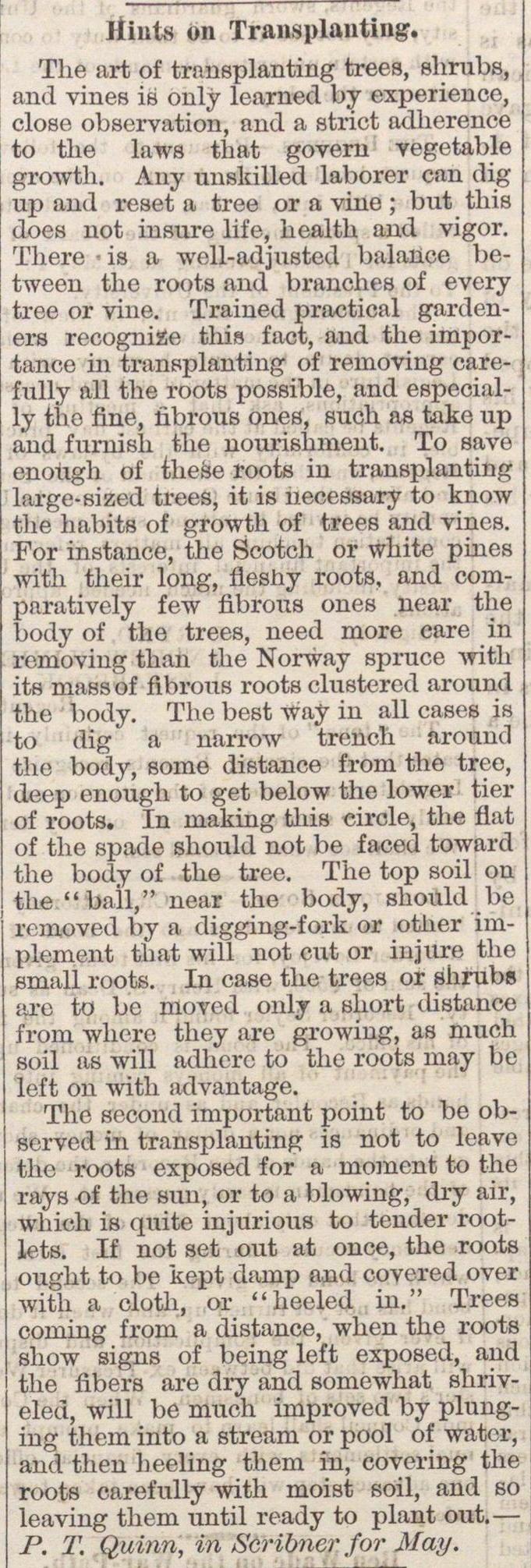Hints On Transplanting

The art of trnnsplanting trees, shrubs, and vines is only learned by experiencc, close observation, and a strict adherence to the laws that govern vegetable growth. Any uuslrilled laborer can dig up and reset a tree or a vine ; but this does not insure life, health aud vigor, ïhere ■ is a well-adjusted balance between the roots and branches of every tree or vine. Trained practical gardeners recogniüe this fact, and the importanco in transplanting of removing carefully all the roots possible, and especially the fine, ñbrous ones, such as take up and furnish the nourishmeut. To save enough of these roots in transplanting liirge-sized trees, it is necessary to know the habits of growth of trees and vincs. For instance, the Scotch or white pines with their long, fleshy roots, and comparatively few ñbrous ones near the body of the trees, need more care in removing than the Norway spruce with its niiiBs of ñbrous roots clustered around the body. The best way in all cases is to dig a narrow trench around the body, some distance from the tree, deep enough to get below the lower tier of roots. In making Üiis circle, the flat of the spade should not be faced toward the body of the tree. The top soil on tlie"b.iil," near the body, should be iv moved by a digging-fork or other iinplement that will not cut or injure the smiill roots. In case the trees or shrubs are to be moved only a short distance from whero they are growing, as muoh soil as will adhere to the roots may be left on with advantage. The socond important point to be observed in transplanting is not to leave the roots exposed for a moment to the rays of the sun, or to a blowing, dry air, which is quite injurious to tender rootlets. If not set out at once, the roots ought to be kept damp and covered over with a cloth, or "heeled in." Trees coming from a distance, when the roots show signs of being left exposed, and the fibers are dry and somewhat shriveled, will be much improved by plunging them into a stream or pool of water, and then heeling them in, covering the roots carefully with moist soil, and so leaving them until ready to plant out. -
Article
Subjects
Old News
Michigan Argus